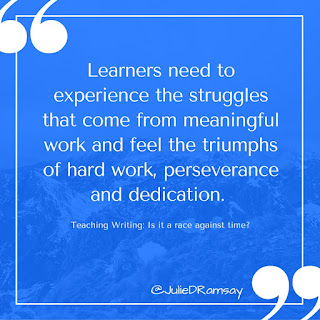I wanted to take a few minutes to share some of the tools that I have found that work really well with students who may be faced with the challenge of Dyslexia. Some of these work very well to support the learning of struggling readers or those with limited language proficiency. The key is for us to find the tool that will best need the unique learning needs of each one of our learners.
- Audio books: I know that this may seem like a given to many, but I know personally, I overlooked this option for many years. Yes, we want our students to be able to read, analyze, and enjoy reading. However, when we want our students to apply content area standards like comparing and contrasting texts, identifying a theme, or supporting an argument with textual evidence, an inability to physically read the text, impedes a student mastering those standards. One thing that I discovered in my research is that the processing that takes place when one's eyeballs read a text and the processing that take place when one hears a text is very similar. With this tool, all students will have the opportunity to discuss and analyze a text with peers. (Digital audio books can generally be checked out from school or public libraries.)
- Voice Typing: For students with Dyslexia, writing is a major challenge. One simple tool that we've discovered is "voice typing" in Google Drive. This allows a student to speak their writing into a document. They do have to tell it when to punctuate and when to go to a new paragraph. I've had students who it would normally take 30-45 minutes to type a couple of sentences, who could compose and entire narrative within 20 minutes using "voice typing." For the first time, I was able to see their creativity and ability to compose in different genres because "voice typing" removed an obstacle to their learning.
- Dyslexie font: Did you know that there is a special font that makes it easier for students with Dyslexia to read? It's called Dyslexie. With this font, students have an easier time reading things that are written. When creating printed material for students, my interns and I have started using this font for all of the students. For someone without Dyslexia, it simply looks like any other font. It's just simpler and easier to read.
- Google Chrome Extensions: There are several extensions that students can add to their Chromebook Google accounts. Speak It will read selected texts out loud. The Open Dyslexic extension overrides all fonts on web pages with the OpenDyslexic font, and formats pages to be more easily readable. It works at preventing the "funny things" that happen to letters for those with Dyslexia. Sometimes, we need our student to read a text in order to build background knowledge. With TLDR (too long didn't read) by tldrstuff.com, learners can get a summary of a web page without leaving the actual site. We've had various levels of success with each of these. It all comes down to the individual student. My middle schoolers are very conscious of being different. These extensions allow them to continue doing the same thing on the same sites as their peers but provide them the support that they need.
- Video diaries, building, making: When it comes to assessing a student's level of mastery, there may be challenges for students with reading obstacles. However, their obstacles should not impede our ability to assess their level of mastery of content standards. All of my learners have the freedom to choose how they demonstrate mastery of standards. Often students with Dyslexia are very intelligent and creative and they have struggled to keep their heads above water at school. Many of them are exhausted by school. By providing them the opportunity to build, make, or create they are able to excel in spite of their specific challenges.

I'd love to hear some of the tools and strategies that you've found successful with your students. Please share them in a comment below.






















